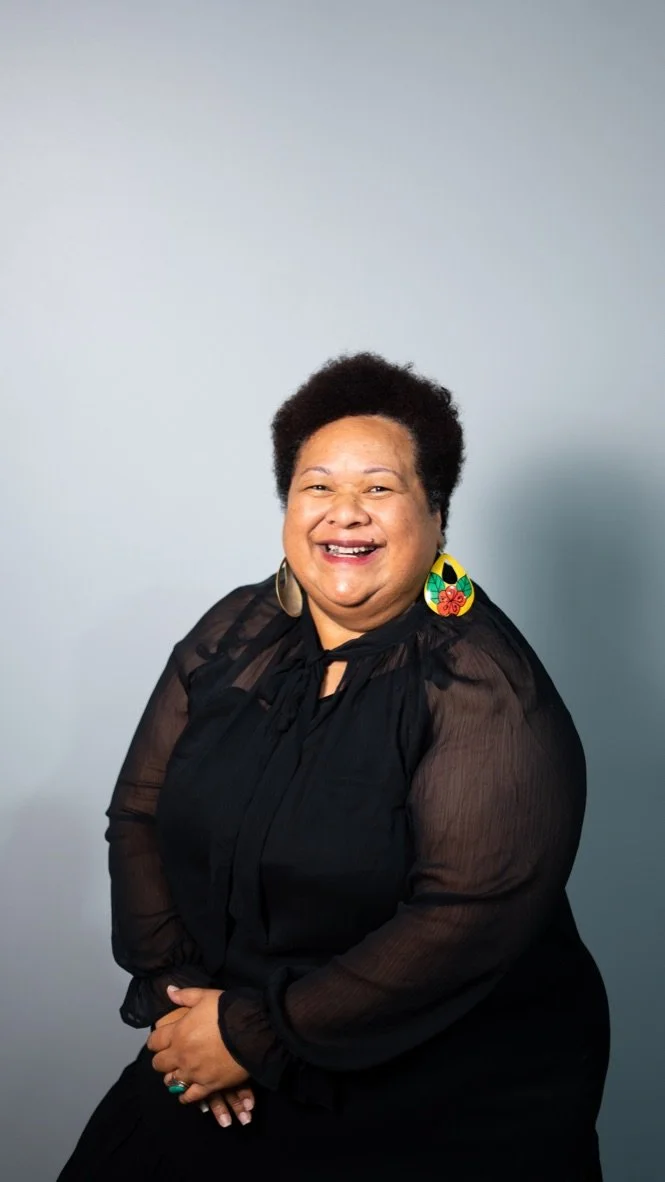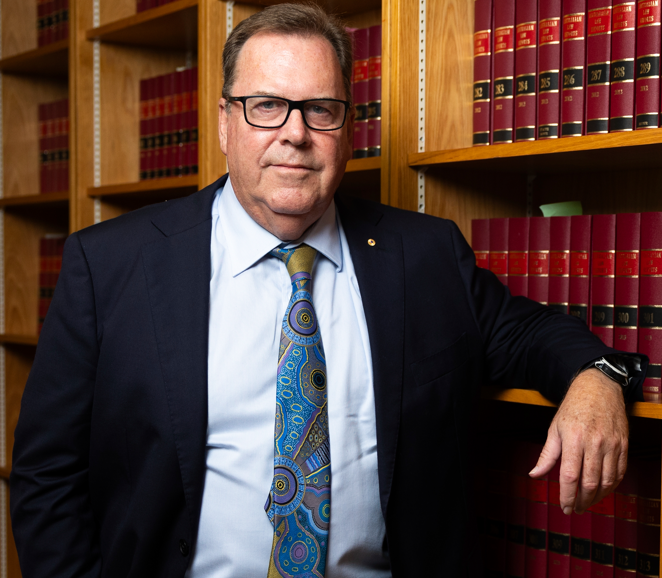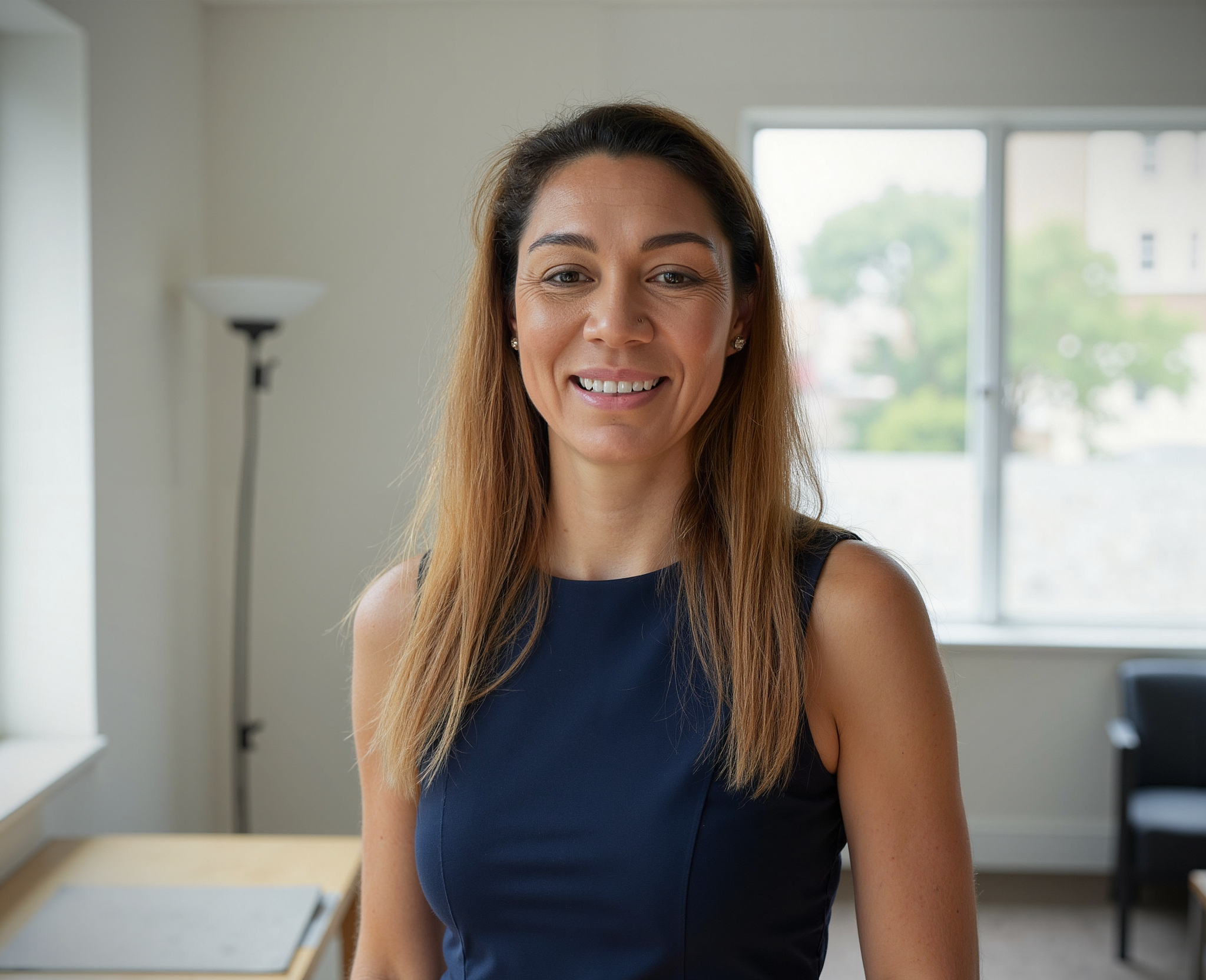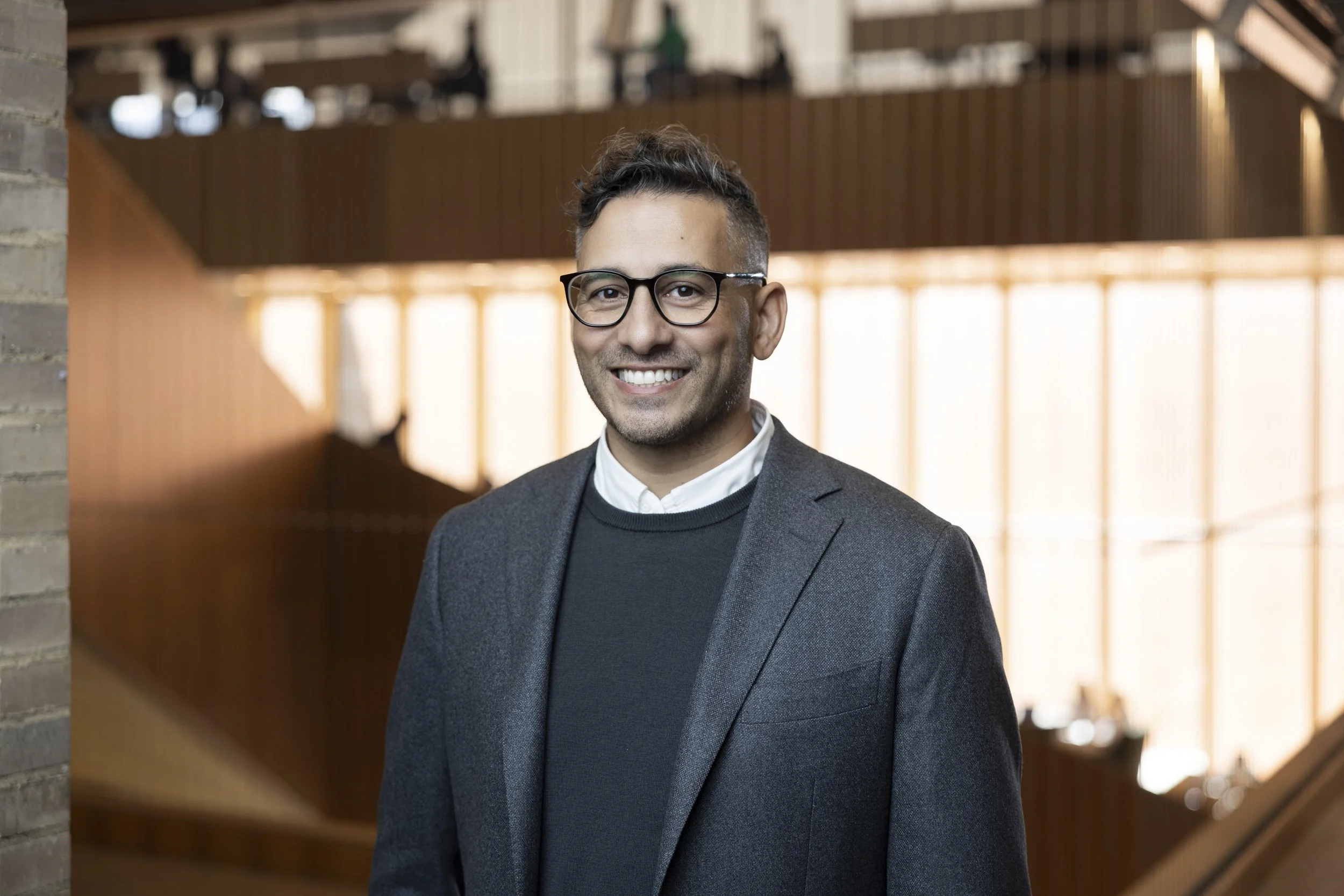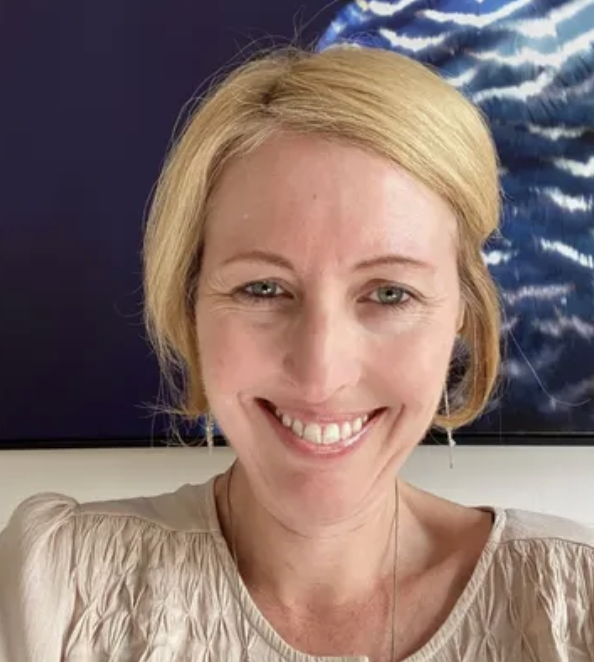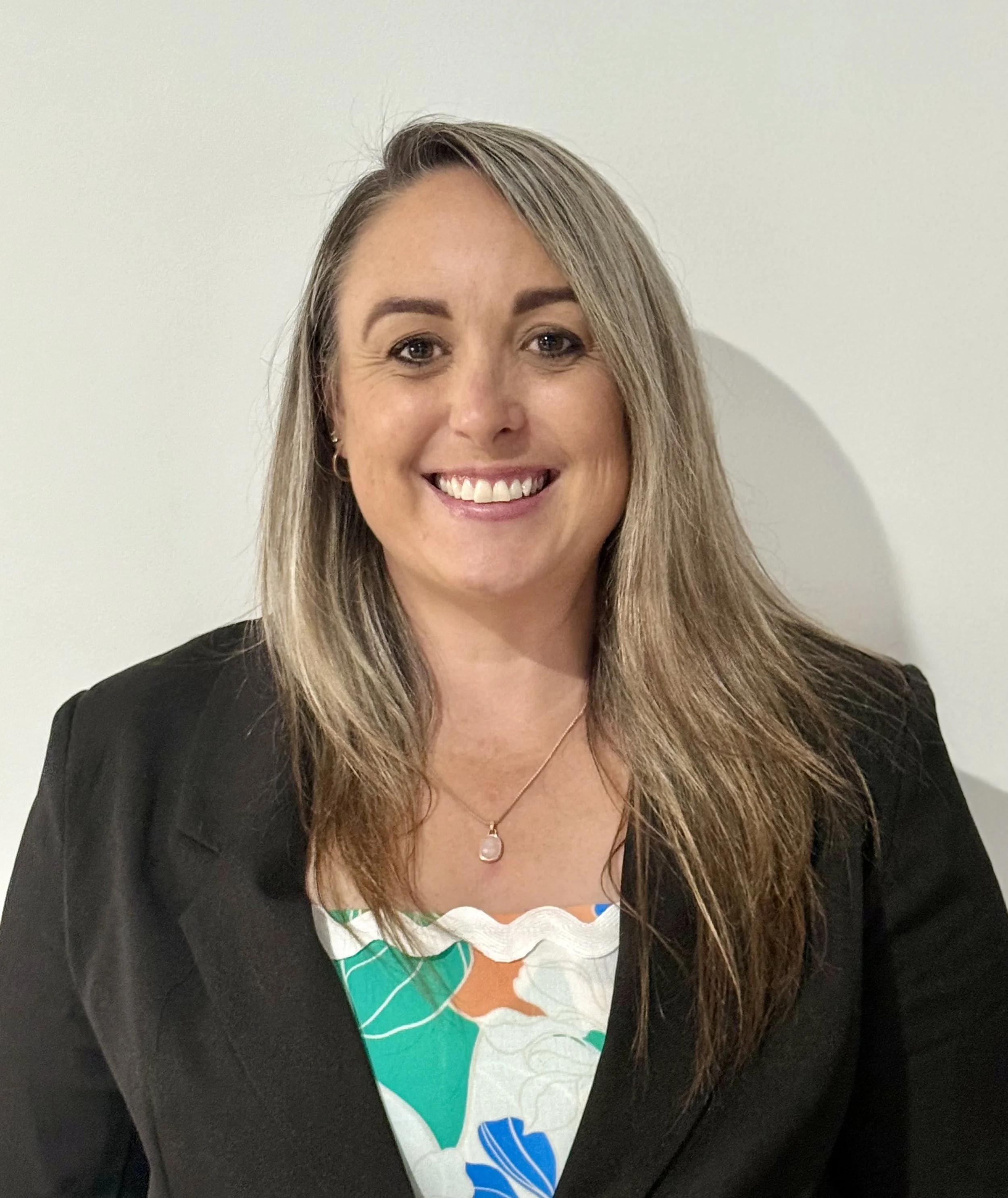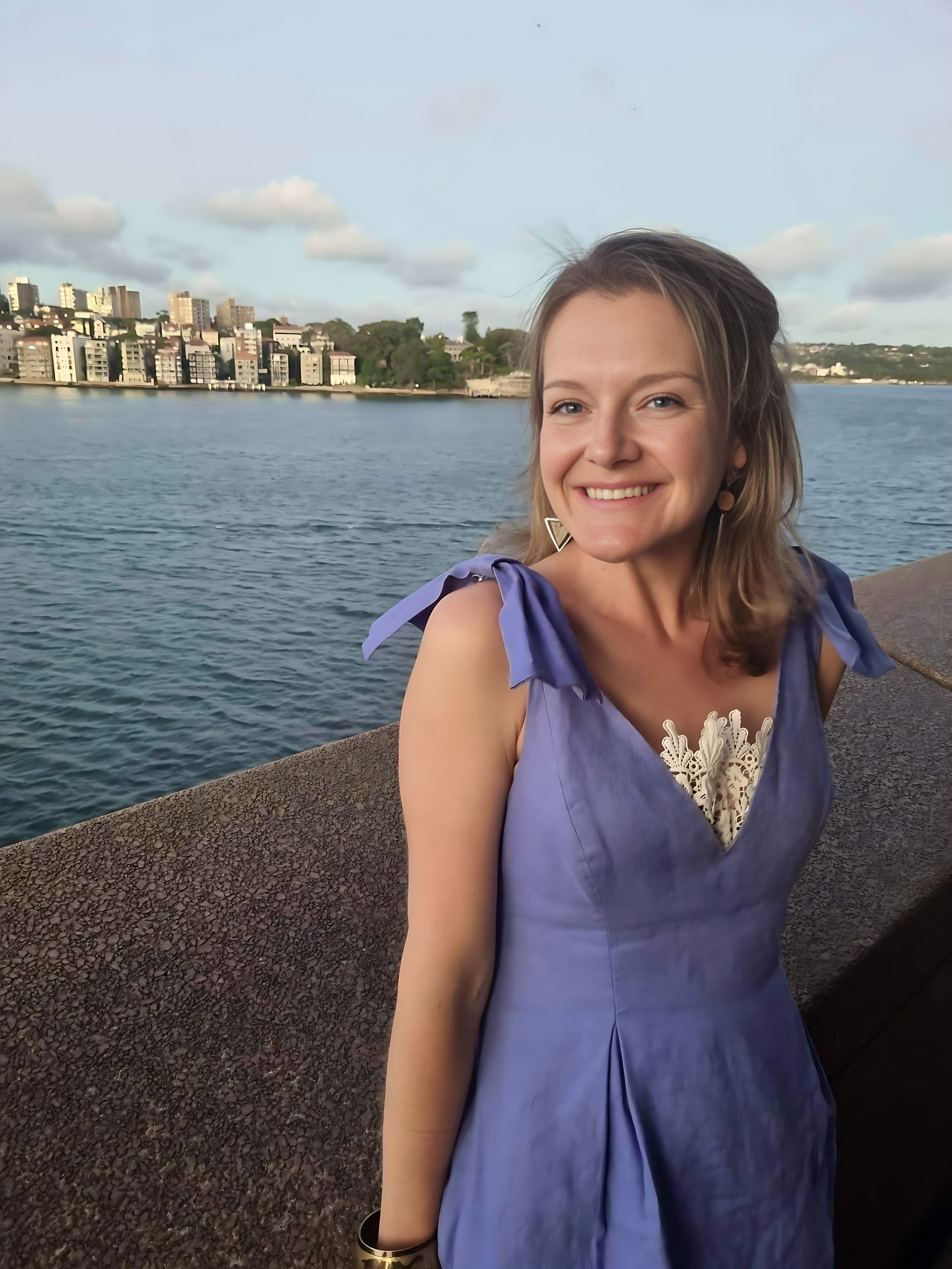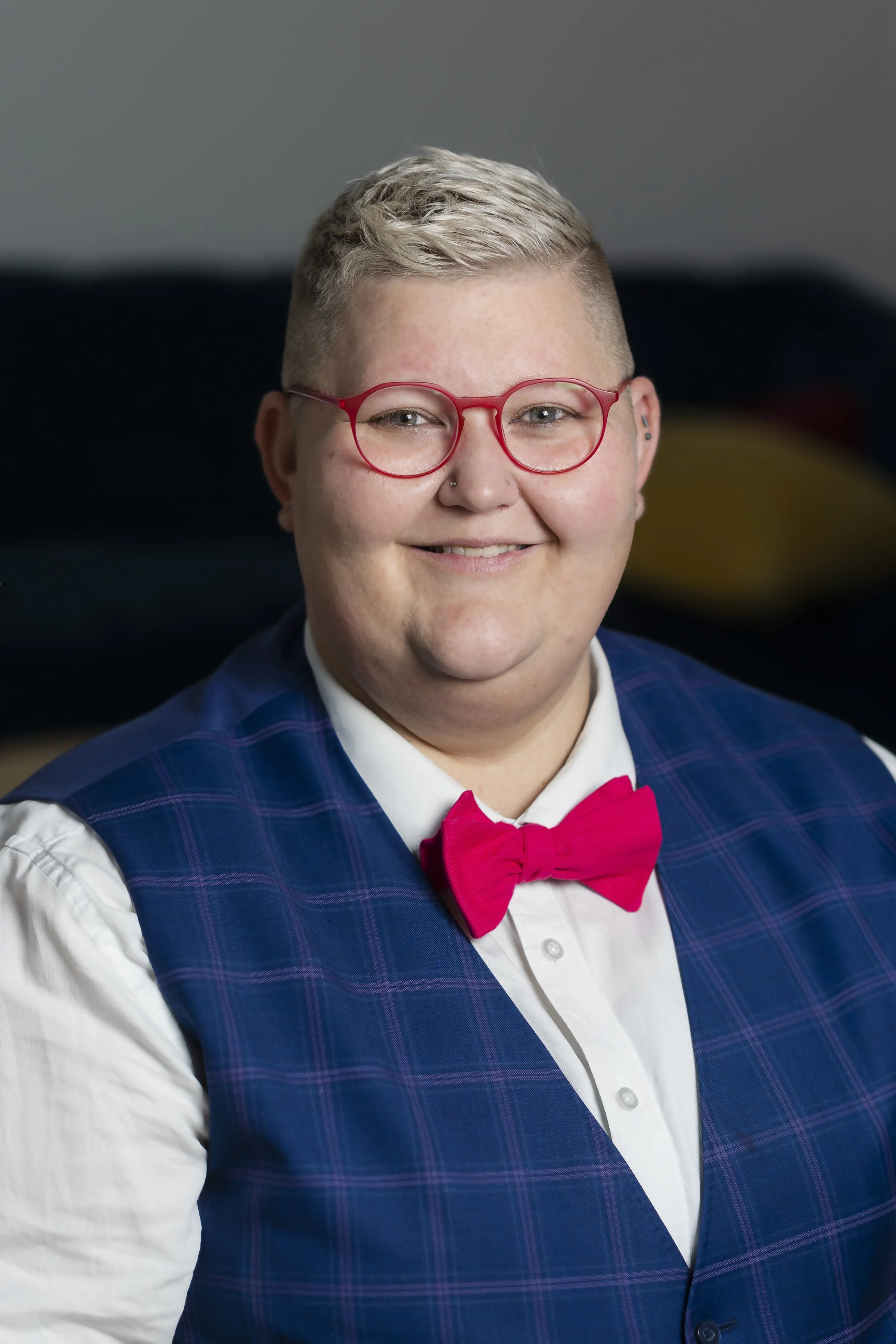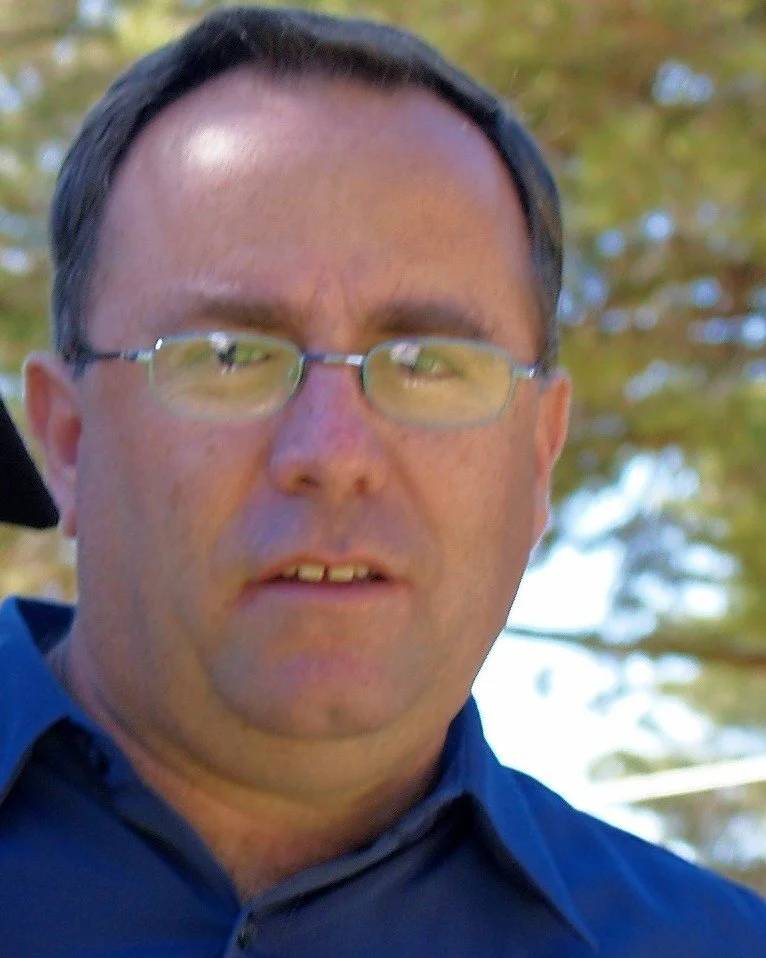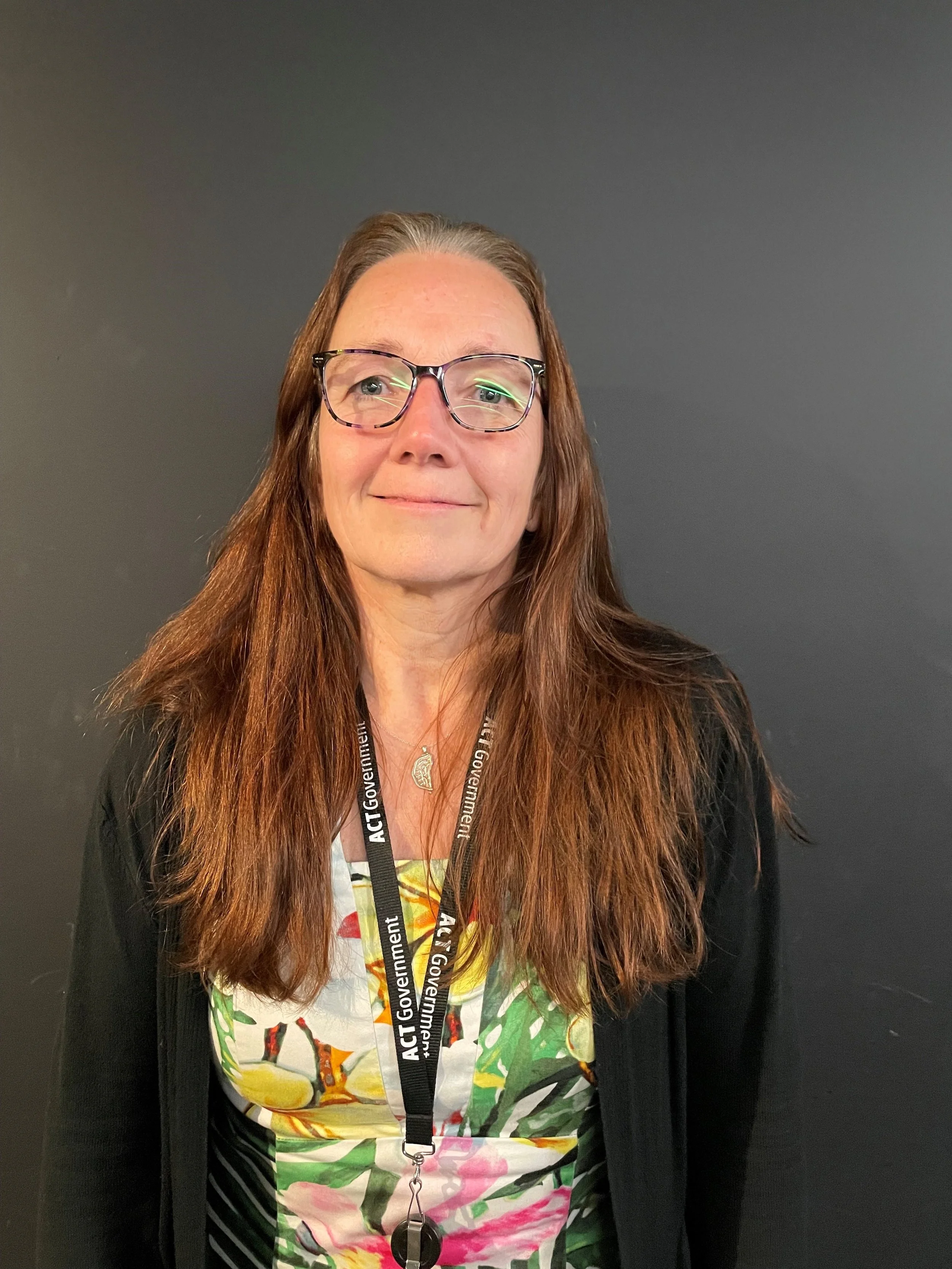Our Speakers
David Mandel, MA, LPC
CEO and Founder of Safe & Together Institute
Professor Daryl Higgins
Director of the Institute of Child Protection Studies at Australian Catholic University
Sarah Brown
Co-Founder of She Is Not Your Rehab
Matt Brown
Co-Founder of She Is Not Your Rehab
Desley Rosas
DFV Project Officer at Katherine West Health Board
Shaffu
Specialised Family Domestic and Sexual Violence Social Worker at Katherine West Health Board
Fiona Kirkman
Head of Legal Engagement at CORTO
Dr. Inez Fainga'a-Manu Sione
Pasifika Community Research Fellow at Pathways in Place
Shane Senituli
Psychologist for Redcliffe Dolphins and Gold Coast Titans
Justice Tom Altobelli
Judge for the Federal Circuit & Family Court of Australia
Pip Rae
Workshop Facilitator, Ethical Investigator & Self-Worth Specialist
Deputy Chief Justice Robert McClelland AO
Judge for the Federal Circuit & Family Court of Australia
Tracy Castelino
Director of ShantiWorks
Kristy Gallagher
Founder of Safe Call Up
Zac Seidler
Clinical Psychologist, Global Director of Research at Movember & Associate Professor with Orygen at the University of Melbourne
Sean Martin
Program Lead for the Ten To Men (TTM): Australian Longitudinal Study on Male Health at AIFS
Steven Roberts
Professor of Sociology at Monash University
Lorna McNamara
Director of Prevention and Response to Violence, Abuse & Neglect at NSW Ministry of Health
Cathy Humphreys
Professor of Social Work at the University of Melbourne
Marlene Lauw
Senior Health Educator/Aboriginal Portfolio Team Leader at NSW Health Education Centre Against Violence
Cherie Toivenen
Director of CLT Byron Consulting
Kerri-Lee Van Oosten
Senior Practice and Program Specialist at Life Without Barriers
Carly Clarke
CHRISTIE Project Manager at Domestic Violence NSW
Allyson Anderson
Operations Manager at Life Without Barriers
Renee Sawyers
Regional Director – Child, Youth & Family, South QLD at Life Without Barriers
Hayley Tuttle
Director of Empowering Growth Pty Ltd
Julie Sach
Senior Training Advisor at Shine
Deborah Mackenzie
Co-Founder/Manager of The Backbone Collective
Franchesca Isla
Social Worker at Evergreen Therapeutic Services
Brintyn Smith
Family Law Barrister, Mediator & Collaborative Lawyer
Margaret Kertesz
Senior Research Fellow at the University of Melbourne’s ARC Centre of Excellence for the Elimination of Violence Against Women
Sophie Curson
Practice Advisor at Churches of Christ QLD
Liz Pallas
Project Lead, DFV Link Coordination at Domestic Violence Crisis Service
Sue Webeck
CEO of Domestic Violence Crisis Service
Kellene Elder
Lead Consultant/Advocate at SaferSteps WA
Nurul Jannah Binte Abdul Kalam
Senior Social Worker at PAVE Integrated Services Ltd
Monica Zhang
Senior Social Worker at PAVE Integrated Services Ltd
Leanne Downes
Training Consultant at Safe & Together Institute
Brianna Pike
Social Worker at La Trobe University
Nirupa Kulasekara Wickremasinghe
Service Leader at Children Contact Service Logan, Uniting Care Queensland
Jordan Sloan
Children and Young People Practice Lead at FVREE
Jess Morrison
Team Leader – Support & Recovery at FVREE
Jane Casey
Specialist Family Violence Advocate at FVREE
Nikki Butler
Practice Quality Consultant at Act for Kids
Catherine Gander
CEO of DV West
Christina Melrose
CYF Training and Coaching Lead at Uniting Vic.Tas
Phil Graham
Child Protection Practice Leader at ACT Children, Youth & Families
Felicity Wilkinson
Team Leader – Family and Domestic Violence Team at ACT Children, Youth & Families
Amanda Kay
Family Violence Liaison at ACT Children, Youth & Families
Janet Carmichael
Executive Director of Court Children’s Services at Federal Circuit & Family Court of Australia
Anne-Marie Rice
Executive Director – National Registrar Practice and Operations at Federal Circuit & Family Court of Australia
Hayley Foster
Director of Family Violence and Director of Access, Equity & Inclusion at Federal Circuit & Family Court of Australia
Dr. Robert Urquhart
Head of Knowledge, Outcomes & Research at Barnardos Australia
Jackie Wruck
Asia Pacific Regional Manager at Safe & Together Institute
Our Sessions
Keynotes
-
TBD
-
TBD
-
One size does not fit for all, yet our services and the dominant culture upon which our services are founded upon are often Western centric. To authentically be diverse, inclusive, and equitable in our practices, the ways of Indigenous peoples need amplification, as such knowledges have often remained hidden within the depths of cultural communities and not within the clinical contexts. This presentation emphasises and celebrates what First Nations people of Australia call "two ways strong" or "two worlds strong." This practical hands-on session will use activity-based learning to teach Pacific methodologies, which can expand on the practice of mainstream providers to be inclusive of culturally and linguistically diverse communities and beyond. It is the ability to embrace the best of both worlds—that of the Pacific and the West to deliver a holistic way of healing and wellness that can benefit all.
-
The All/Whole of Families Approaches for Addressing Domestic and Family Violence: An Aboriginal Lens on the Safe & Together Framework (ALFIES) project explored holistic approaches to supporting Aboriginal families experiencing domestic and family violence. Using a trauma- and violence-informed lens, the project examined how the impacts of colonisation, systemic racism, intergenerational trauma, and ongoing systemic abuse and neglect shape the work of Aboriginal Community Controlled Health Organisations (ACCHOs). The project also assessed the Safe & Together Model to determine how it might align with and strengthen the existing practices of ACCHOs in New South Wales when viewed through an Aboriginal worldview. This presentation will share the key research findings and provide recommendations for effective implementation and practice.
-
In their powerful keynote message, Matt and Sarah Brown share their innovative and revolutionary approaches to addressing family violence, emphasising the pivotal role of community and collective healing in breaking the cycle of intergenerational trauma while passionately advocating for healthy masculinity role modelling. Matt and Sarah encourage men to overcome shame while taking responsibility for their own healing. Their message inspires a transformative journey towards healthy relationships and cultural shifts that challenge ingrained norms to foster a safer, more empathetic and holistic society.
-
In one of the final plenary sessions, Safe & Together Institute founder and CEO David Mandel sits down with Deputy Chief Justice Robert McClelland and Justice Tom Altobelli for a candid, forward-looking conversation on the evolving landscape of family law and domestic abuse.
This “fireside chat” brings together judicial and practice perspectives on how courts can respond more effectively to coercive control and its impact on children. The discussion will explore how recent legal reforms, best practice principles, and cultural shifts are reshaping expectations of parents and practitioners alike.
-
This session will draw on data from Australian Child Maltreatment Study about the nature and prevalence of children’s exposure to domestic violence to argue why we need to rethink prevention, and children’s safety from coercive control.
Workshops
-
Technology is increasingly weaponised in family disputes and child welfare contexts, enabling coercive control through surveillance, tracking, harassment, and digital manipulation. The rapid emergence of AI tools, including voice cloning, image manipulation, and deepfake technologies, has amplified the risks for children and non-offending parents.
This session will explore how professionals can respond effectively to both technology facilitated and AI-assisted abuse, with a focus on improving safety and outcomes for children and families.
Drawing on case studies, recent law reforms, and practice experience, the presentation will highlight the intersection between coercive control, technology misuse, and child safety. Examples include hidden surveillance via smart devices, hacked smart home systems, AI-generated deepfakes, and digital coercion. Participants will learn how these behaviours harm children directly, through exposure to monitoring, intimidation, and misinformation, and indirectly, through undermining the safety and autonomy of the non-offending parent.
The session will demonstrate practical strategies for professionals to embed domestic violence–informed approaches into child welfare, family law, and service delivery. Guidance will be provided on recognising risk indicators of AI- and tech-facilitated coercive control, building parenting arrangements and safety plans that minimise opportunities for ongoing abuse and developing collaborative, cross-system responses.
Lessons learned will be shared from mediation and legal practice, including how AI tools can support professionals to identify patterns of coercive control across large datasets and strengthen responses to protect victim-survivors and children.
By the end of this session, participants will have clear, actionable strategies to address technology- and AI-assisted coercive control and to support safe, child-centred interventions for families.
-
Domestic abuse cases in family law often present complex and conflicting narratives that challenge legal professionals, child protection workers, and service providers. Traditional incident-based approaches—focused on isolated events—can obscure the broader context of abuse, misrepresent survivor responses, and fail to account for the cumulative impact on children. This presentation offers a practical, evidence-informed framework for reframing these narratives using the Safe & Together Model’s pattern-based approach.
Grounded in the principles of perpetrator accountability, child-centred practice, and recognition of protective parenting, this session will guide participants in identifying and documenting patterns of coercive control, emotional abuse, and non-physical violence. These behaviours, though often minimized or misunderstood in legal contexts, are critical to understanding risk and making informed decisions about custody, visitation, and child safety.
Participants will explore how to apply the Safe & Together Model with fidelity in family law settings, using tools that support consistent documentation, trauma-informed language, and cross-system collaboration. The presentation will highlight strategies for improving communication between legal professionals, child protection agencies, and domestic violence services—ensuring that survivor safety and child well-being are central to decision-making.
The session will use qualitative insights from practice and case reviews to demonstrate the model’s impact on families and service delivery. Participants will leave with practical tools and strategies to:
Recognise and document patterns of abuse beyond physical violence
Understand the implications of coercive control for children and parenting
Present evidence in a way that supports safety, accountability, and justice
Collaborate effectively across systems to improve outcomes for families
This presentation is ideal for professionals working in family law, child protection, and domestic violence response who are seeking to deepen their understanding of coercive control and enhance their practice through the Safe & Together Model.
-
We will examine the implementation of the Northern Territory’s Domestic and Family Violence Risk Assessment and Management Framework (RAMF) and the Safe & Together Model at Katherine West Health Board (KWHB) and its regional partners, highlighting a culturally responsive, trauma-informed approach to supporting families affected by DFV across the Katherine West and broader Big Rivers regions of the Northern Territory.
KWHB’s history of 27 years as an Aboriginal Community Controlled Health Service reflects its deep commitment to community-led delivery of primary health care across the remote, 160,000 km² region southwest of Katherine in the Northern Territory. Over time, KWHB has steadily expanded its DFV support services for victim survivors, their families, and communities.
In 2019, KWHB commenced implementation of the nurse-led Maternal Early Childhood Sustained Home-visiting (MECSH) program and in 2022 recruited a dedicated DFV Social Worker embedded in the Safe & Strong Families team.
In early 2023, a regional partnership between KWHB, Sunrise Health Service, Wurli-Wurlinjang Health Service, and NT Health was established to deliver the Big Rivers Tackling Indigenous Smoking program. The Big Rivers regional partnership arrangement would be foundational for delivering other programs, services and support across the 340,000 km² region through a collaborative and culturally grounded approach.
In mid-2023, a DFV project officer was engaged to implement the NT Government’s DFV Risk Assessment & Management Framework at KWHB, marking a strategic shift toward whole-of-organisation change and capacity building. RAMF implementation included policy reviews, development of tools and templates, and staff training and awareness.
The RAMF Implementation program, together with the established regional approach for program delivery, laid the groundwork for building a robust, region-wide response to DFV, in late 2024.
The Big Rivers Healing for Our Mob program—developed in partnership with Sunrise Health Service, Wurli-Wurlinjang Health Service, and NT Health—embodies the principles of the Safe & Together Model by centering victim-survivor safety, perpetrator accountability, and child well-being.
The program delivers care through three integrated pillars: practical support, therapeutic care, and community awareness and advocacy.
Key success factors for developing and delivering the program include:
Strong governance and executive support across partner organisations
High staff engagement and cross-sector collaboration, including contributions from clinical, health promotion, and family services teams
Deep community involvement, with over 300 participants contributing to baseline surveys and consultations that inform service design and advocacy
Community voices have been instrumental in shaping the program’s priorities. Consultations revealed a shared vision for healing, where families are safe, connected, and culturally grounded. Participants have called for crisis support infrastructure, culturally safe programs for men, improved legal access, and long-term funding to sustain change. These insights have directly influenced, and continue to inform, funding submissions and advocacy efforts.
Referrals to the Healing for Our Mob program are accepted from partner organisations, DFV service sector organisations, families, and community members, with eligibility criteria ensuring support reaches those ready for healing. The program’s commitment to consistent language, tools, and policies across services ensures a unified, respectful approach to care.
KWHB’s presentation will detail the implementation timeline, showcase the collaborative governance model, and share lessons learned from embedding the Safe & Together framework in a remote, culturally diverse region. It will also highlight how elevating community voices and investing in staff capability have been critical to building a sustainable, responsive system of care.
-
The All/Whole of Families Approaches for Addressing Domestic and Family Violence: An Aboriginal Lens on the Safe & Together Framework (ALFIES) project explored holistic approaches to supporting Aboriginal families experiencing domestic and family violence. Using a trauma- and violence-informed lens, the project examined how the impacts of colonisation, systemic racism, intergenerational trauma, and ongoing systemic abuse and neglect shape the work of Aboriginal Community Controlled Health Organisations (ACCHOs). The project also assessed the Safe & Together Model to determine how it might align with and strengthen the existing practices of ACCHOs in New South Wales when viewed through an Aboriginal worldview. This presentation will share the key research findings and provide recommendations for effective implementation and practice.
-
We will present a framework of domestic violence–informed practice with fathers who are perpetrators. We work with a feminist social entrapment framework that maps perpetrator patterns to develop a comprehensive risk assessment and management plan. We will address:
Naming and detailing the hopes of men
Moving beyond good intentions to daily practices of respect, reparations, and accountability
Responsible interventions prioritising safety of those harmed
Collusive messages and practices that occur at structural, organisational, relational, and individual levels
-
This presentation introduces Safe Call Up, a covert, patent-pending safety app designed specifically to address this gap. Built in consultation with domestic violence advocates, legal practitioners, frontline responders, and survivors, Safe Call Up combines survivor-centred design with cutting-edge technology to provide protection, documentation, and intervention opportunities that current tools do not offer.
The session will explore:
1. Survivor-Centred Design Grounded in Coercive Control Frameworks
Safe Call Up has been designed to align with the Safe & Together Model’s focus on recognising patterns of coercive control and centring survivor and child safety. Survivors told us that existing apps often put them at greater risk because they required visible interaction or had easily recognisable interfaces. Safe Call Up incorporates covert disguise, ensuring the app can be hidden in plain sight, and voice activation, allowing help to be triggered without physically touching the phone. These design elements reflect lived experience and are directly informed by the day-to-day realities of coercive control.
2. Integration with Emergency and Legal Systems
Another key innovation is real-time police live-streaming integration. Survivors can covertly live-stream incidents directly to law enforcement, sending both audio and video alongside precise GPS location data. This not only increases the speed of response but also provides critical contextual information to police. Importantly, all recordings are stored in a secure evidence locker designed for court admissibility, addressing one of the biggest challenges in holding perpetrators accountable: lack of admissible, real-time evidence.
The presentation will discuss how this technology bridges current system gaps, responding both to survivor needs and to police services actively seeking alternatives to manual systems like BluLink.
3. AI-Driven Safety Planning and Service Integration
Safe Call Up is not just a crisis tool. Its AI-driven safety planning module adapts dynamically to survivor circumstances, providing personalised strategies that evolve as risks and contexts change. This feature links with services across the domestic violence ecosystem—legal aid, advocacy organisations, counselling, and emergency accommodation—strengthening the information-sharing capacity that agencies such as Anglicare WA have identified as a critical priority.
4. Evidence and Piloting Strategy
The presentation will outline the initial pilot design, which seeks to engage a diverse range of organisations across states and territories, ensuring national relevance. Surveys with over 40 professionals have already validated demand for the app, with strong feedback that government-funded access is critical for equity. By partnering with five organisations per capital city, the pilot will measure impact at both survivor and system levels, producing evidence for long-term sustainability and scaling.
5. Policy and Practice Implications
Safe Call Up aligns with national objectives to improve survivor safety, reduce homicide rates, and enhance evidence gathering for prosecution. By embedding technology into survivor-centred frameworks, the app also demonstrates how digital innovation can complement—rather than compete with—frontline advocacy.
The presentation will explore implications for:
Frontline practice: How advocates and legal practitioners can use the app as part of holistic safety planning
System reform: How the technology strengthens information sharing across services while maintaining survivor control
Policy development: How digital innovation supports government priorities on coercive control recognition and domestic violence prevention
By the end of the presentation, participants will be able to:
Recognise how covert, survivor-led technology can fill critical gaps in responding to coercive control.
Understand how Safe Call Up integrates with policing and legal systems to enhance accountability and survivor safety.
Consider practical ways their own organisations could incorporate technology-driven safety planning and crisis response into everyday practice.
Why This Matters Now
The domestic violence sector is at a crossroads. Policy advances such as coercive control legislation are creating opportunities for systemic change, yet without tools that reflect the lived realities of survivors, these advances risk being symbolic rather than transformative. Safe Call Up offers a new model: one where survivors’ voices, technology, and service systems intersect to create real-time, life-saving pathways out of violence and control.
This presentation is not just about showcasing an app—it is about reframing how we think of survivor safety in the digital age. It challenges us to imagine how technology, when designed ethically and in partnership with survivors, can become an ally in the fight against coercive control and family violence.
Safe Call Up is ready for piloting in 2025. By sharing our journey, challenges, and roadmap, this session will open dialogue with sector leaders on how to collaboratively drive survivor-centred innovation that changes lives and saves lives.
-
This presentation explores the development, implementation, and impact of quarterly Safe & Together Model refreshers delivered to frontline practitioners working with families impacted by domestic and family violence (DFV). These refreshers are designed to reinforce fidelity to the Safe & Together Model, promote sustainable practice change, and enhance cross-system collaboration in responding to coercive control and its effects on children.
The Safe & Together Model outlines a framework for collaborating with survivors, addressing perpetrators’ behaviours, and prioritising the safety of children while keeping them with their non-offending parent. Quarterly refresher sessions, initiated in April 2025, were developed in response to practitioner feedback and challenges in applying the model consistently in complex practice settings. Each session covers key elements of the Model, including documentation, survivor engagement, mapping perpetrator patterns, and evaluating the impact on children.
Clarity of Understanding of the Safe & Together Model: The refreshers demonstrate a deep understanding of the model’s core principles. One session emphasized the importance of affirming survivor agency, mapping perpetrator patterns, and documenting protective efforts. The April session focused on domestic violence–informed documentation and the risks of obscuring perpetrator behaviour through jargon. Both sessions reinforced the model’s emphasis on perpetrator accountability and survivor strengths.
Unique and Sustainable Implementation: Our quarterly refreshers represent a unique and sustainable strategy for embedding the Safe & Together Model into everyday practice. Rather than relying solely on one-off training, we have created a rhythm of ongoing learning that supports practitioners to reflect, recalibrate, and deepen their application of the model. This approach has proven effective in maintaining momentum and preventing drift from fidelity.
Fidelity Implementation Strategies: Each refresher is structured around fidelity markers, including the use of structured mapping tools, affirming language, and survivor-centred engagement. We use real-world scenarios, reflective questions, and interactive exercises to reinforce fidelity. For example, the one refresher included a detailed walkthrough of the Partnering Process, guiding practitioners through steps to map perpetrator behaviour and assess survivor protective actions.
Cross-System Collaboration: The refreshers have strengthened collaboration across child protection, housing, mental health, and DFV services. By aligning language and practice through the Safe & Together lens, practitioners are better equipped to communicate risk, safety, and protective factors across systems. The inclusion of coercive control legislation updates in the refreshers further supported shared understanding and legal literacy among professionals.
Impact on Families and Service Delivery: Feedback from practitioners indicates that the refreshers have improved their ability to engage survivors respectfully, document risk accurately, and advocate effectively within systems. Survivors report feeling more heard and validated, and children’s experiences are more consistently captured in assessments. The refreshers have contributed to more nuanced safety planning, including culturally safe and unconventional strategies tailored to individual family contexts.
Use of Data: We have collected qualitative feedback from participants after each refresher, with themes including increased confidence in applying the model, improved documentation practices, and greater awareness of intersectionality. Quantitative data shows a 35% increase in the use of Safe & Together mapping tools in case documentation following the April refresher, and a 42% increase in survivor engagement strategies post-July. These findings support the value of regular, targeted refreshers in sustaining high-quality practice.
-
This presentation will explore the implications of current system responses to children who are victims of family violence and sexual violence. We will focus on the ways in which the family law system, therapeutic services, and health services in Aotearoa New Zealand enable and collude with perpetrators to block children and young people’s access to support and healing services.
In July 2025, The Backbone Collective, released an online survey to gather insights and experiences from women whose children had been stopped or discouraged by any person, organisation, or court from attending counselling or any other “therapeutic service” designed to help them recover and heal from their experiences of family violence and/or sexual violence and abuse. The survey also sought to understand counselling and therapy services’ requirements for consent from both parents when working with children when one parent is a perpetrator of family violence. The survey also asked more broadly about experiences of perpetrators blocking children and young people’s access to health services, medication and/or treatment.
Backbone received 63 valid responses from women relating to 113 children and young people of varied ethnicities and ages and who live throughout Aotearoa New Zealand. All participants said that they or their child had experienced family violence and/or sexual violence. In most cases (95%) the abuser was the father the child.
Protective mothers in this survey had tried to access a range of counselling and therapeutic services at multiple times for their children to help them recover and heal from their experiences of family violence and/or sexual violence. Despite their experiences of violence and abuse, the majority of the children (92%) were blocked from accessing support.
Overwhelmingly, women explained that perpetrators used their “guardianship rights” to force counsellors/therapists to stop working with children already engaged with services or to prevent service from commencing. Additionally, service providers commonly required consent from both parents prior to providing the service to their child, even when the other parent was a perpetrator. When perpetrators found out that children were attending or intending to attend, that knowledge was used against protective mothers in family court proceedings.
The overall impact of the perpetrator, court, and service providers blocking children and young people’s access to support was described as enabling further controlling behaviours, which limit both mothers’ and children’s freedom to tell people about the abuse and get support to heal. Protective mothers were left extremely stressed and unsupported as they try to support children with significant emotional and behavioural challenges. Children felt confused, distressed, and upset upon learning they could no longer access support.
Women also described examples of the perpetrator regularly preventing/discouraging children from accessing healthcare services. Behaviours included insisting on being present at appointment and healthcare services, withholding consent regarding healthcare services, refusing to make or attend appointments, telling children they did not need the healthcare service, and intimidating or threatening healthcare providers.
We believe that all children and young people should be able to safely access healthcare, counselling, and therapeutic services in relation to family and/or sexual violence—delivered by qualified and accredited practitioners—without being constrained by parental consent requirements, court orders, or other system-imposed barriers.
This workshop draws on the Safe & Together Model to explore how systems can unintentionally collude with perpetrators by upholding practices that prioritise parental rights over child safety and recovery. The Model’s perpetrator pattern–based approach provides a critical lens to understand how abusive partners continue to use systems—including health, counselling, and family law—as tools of post-separation coercive control.
Using findings from the Backbone survey of women victim-survivors in Aotearoa New Zealand, we will demonstrate how the Safe & Together Model offers practical tools to:
Map perpetrator behaviours and their impact on child and family functioning.
Partner with the non-offending parent to enhance protective capacity and support healing.
Apply a child-centred lens that prioritizes safety, stability, and nurturance over procedural neutrality.
Challenge assumptions about shared parental consent, especially when one parent is using systems to obstruct access to care.
Participants will leave with concrete strategies for applying the Model’s critical components, core principles, and practice tools to real-world dilemmas—particularly where service provision is delayed or denied due to consent issues. The workshop will also highlight multiple pathways to harm, reinforcing the need to assess not just physical violence but the broader pattern of behaviours that undermine child well-being.
-
This presentation explores the often-overlooked protective strategies and adaptive responses used by victims of domestic and family violence to minimise harm and maintain safety for themselves and their children. It challenges harmful stereotypes and reframes common narratives around “why they stay,” offering a strengths-based, trauma-informed lens to understand survival and decision-making.
The session begins by establishing a safe, confidential training space with clear guidelines around respectful dialogue and emotional support. Presenters introduce key language and concepts to ensure clarity and inclusivity throughout the session.
Key themes include:
The role of shame in diminishing confidence and shaping victim responses
Survival responses to abuse, including the Four Fs (fight, flight, freeze, fawn), with a focus on the fawn response as a nuanced, neurobiologically informed safety strategy
The complex decision to stay and how this can reflect protective action rather than helplessness
Daily acts of heroism, including invisible risk-mitigation strategies that victims implement to protect their children and reduce escalation
Walking alongside clients, with practical tools for enhancing safety planning, holding space, and recognising timing in trauma-informed support
Ethical tensions, including how professionals can navigate the balance between client autonomy and duty of care
Long-term reflections, considering what trauma-informed reform could look like and how professionals can maintain hope, perspective, and ethical clarity in high-risk contexts
Drawing on lived experience, professional insights, and a commitment to client-led practice, this session offers a grounded, practical, and respectful approach to supporting victim-survivors—particularly when leaving is not an immediate or safe option.
This presentation is suitable for practitioners across the domestic and family violence, child protection, health, education, and justice sectors, and aims to strengthen professional practice through reflection, understanding, and empathy.
-
Queer parents who navigate the Australian family court frequently experience forms of coercive control that extend beyond the interpersonal level and into the structures of the legal system. These patterns of systems abuse can undermine parental identity, devalue queer family structures, and reproduce harm that affects children’s safety, stability, and developmental well-being. While domestic and family violence in LGBTQIA+ communities is increasingly acknowledged, current legal and service responses often remain shaped by heteronormative assumptions that obscure the lived realities of queer families.
This presentation draws on a structured synthesis of domestic and family violence research, queer theory, minority stress frameworks, and socio-legal analysis to examine how identity-based stigma and institutional power shape the experiences of queer survivors in the family court. The analysis identifies ways in which perpetrators may strategically mobilise legal processes to continue coercive control after separation, including challenging parental credibility, manipulating procedural mechanisms, and exploiting gaps in recognition of diverse family forms.
Grounded in Safe & Together principles, the session highlights how these systemic dynamics impact children’s safety and relationships by disrupting protective parenting, destabilising caregiving roles, and reinforcing conditions that allow ongoing harm. The presentation also identifies practice implications for professionals working in family dispute resolution, domestic and family violence services, and allied sectors. Trauma-informed and identity-affirming approaches are outlined to support practitioners to recognise patterns of legal systems abuse, strengthen protective parenting responses, and improve safety outcomes for queer families.
By centring the experiences of queer survivors and integrating lived experience with rigorous scholarship, this presentation contributes to a more inclusive understanding of coercive control, parenting, and legal system risk. It aims to strengthen practice and support the development of equitable, child-centred responses within family law contexts.
-
The CHRISTIE Project (Collaboration to Harness Research Involving Safe & Together: Inquiry and Evidence) was a research and capacity-building project undertaken in four local government areas in NSW in 2024-25. Funded by the NSW Ministry of Health, the project team consisted of a research team led by the University of Melbourne, in collaboration with the NSW Ministry of Health, DVNSW, and ACWA.
The aim of the CHRISTIE Project was to simultaneously develop evidence and drive improvements in collaborative and holistic service provision for those experiencing domestic and family violence with a focus on children in the context of their family and social relationships. All research participants attended the Safe & Together Core Training and were part of regular Communities of Practice (CoPs) to support and embed new and innovative practices. The key learnings from the CHRISTIE Project will be discussed in this presentation—in particular, the challenges and barriers faced by practitioners in NSW from a range of NGO and government services in promoting safety for families and keeping children and young people at the centre of the service response.
The presentation will include:
An introduction to the CHRISTIE project and the relationship between capacity building and developing the evidence base
A discussion of the key findings regarding child-centred practice within the Safe & Together framework
A discussion of the challenges and opportunities in creating local service alliances
The state-based work that has been developed by DVNSW and ACWA as a result of the CHRISTIE project
-
Historically, there have been two overlapping yet separate streams of social services for managing the issues of domestic violence and child protection both in Singapore and internationally. As such, services for families often tend to operate in silos. This results in partial interventions by social workers that ignore work with perpetrators and/or work with the entire family to address the underlying issues beyond the violence.
In response, PAVE—the only integrated service for family violence and child protection in Singapore—developed the Integrated Model, which provides the full spectrum of services for families experiencing co-occurring issues of family violence and child protection. This model takes into consideration the need to address individual member's issues and safety concerns while being family-focused in its approach when delivering services to stop the violence. Once the abuse stops, work does not end there. Using a systemic lens, the next phase consolidates change, re-establishes trust, and promotes healing within families whether they decide to stay or separate.
In conceptualizing the model, we had incorporated Safe & Together and will highlight its alignment and complementarity within the Asian context. Drawing from our experiences working with men, women, and children, we will also illustrate how the Model’s concepts and tools have been applied in direct practice.
As the first Safe & Together Model Certified Trainers in Singapore, we also reflect on our experiences providing training to our colleagues, statutory agencies and community partners. Through participants’ feedback and trainer’s reflections, we explore our successes and challenges in (1) engaging and securing the buy-in of the model of community partners, (2) contextualizing the model to Singapore's unique socio-cultural landscape, and (3) implementing these trainings. Anecdotal reflections from professionals will be shared to demonstrate how the Safe & Together Model remains fluid, relevant, and responsive even in the Singaporean context.
-
Sophie will deliver a presentation on the most helpful aspects of practice that align with the Safe & Together Model when discussing domestic and family violence (DFV) with children who are victim-survivors. She will combine her lived experience with anecdotes while she has been working across the DFV sector as a Safe & Together Model Certified Trainer and for child protection in Queensland.
The presentation will cover the following:
1. Privacy
There is no pathway when young people seek help for themselves. The legal framework around informing caregivers/guardians does not often allow for children to have spaces to themselves.
For children, there is a visible lack of adults making sure their story is kept confidential. This can be reinforced by system responses. Children often know that systems will get people “in trouble” or “break up their family,” and developmentally they see themselves as an integral part in these outcomes.
Silence is often protection, so when there is disclosure or “hints,” these need to be addressed. Children also have huge anxieties about protecting other trusted people (i.e., “I don’t want to tell you CSO Sophie because you might get hurt.”).
Young people can and do want to talk about their experiences of family violence when the conversation is safe, authentic, and nonjudgemental, but trust is also key.
2. Punishment and Rules
Coercive control often equals an environment where a child’s concept of how to be a good person following the rules is continuously derailing.
Many children talk about that commands/demands go beyond a moment or context and forever shape the way they respond in certain circumstances. The “rule” spills into choices in other spaces.
Hear from many young people that they only had space to understand their experience when they got enough power to “fight back.” When the pendulum shifts young people start to get more perspective that this wasn’t okay, especially if they way they coped or managed wasn’t healthy and they face consequences the perpetrator didn’t.
The ideas that misusing power, control and fear are “accepted” parts of parenting under the guise of tough love creates an environment ripe for DF.
Children have limited experiences to see that the rules at home are different in other families (especially when isolated by PUV) so they may not see unfairness the same way.
3. Motivation and Choice
The Resilience Roadmap speaks a lot about building a child’s capacity to self-scan and understand “how do I know what I feel, need, and want?” Many children shut down or suppress this mechanism to stay safe.
We’ll discuss the way we perceive the choices young people have. Children will align with whatever they can manage, and when they can’t, they are forced into vulnerable situations. The choices made when forced to survive rather than thrive look entirely different.
Siblings will have entirely different responses to the same patterns of behaviour from a perpetrator. Some will become expert mediators, situation diffusers, or parentified little people trying to respond as best they can, but this is not developmentally what their brain needs and sets up a situation of “lost childhood.”
When speaking with children, remember the auto-pilot towards safety will kick in. If they “change their story,” do not be shocked.
4. What Hurts and What Works
Young people are grappling with complex thoughts, feelings, and emotions and need support, not judgement. Young people carry guilt, shame, defensiveness, anger, despair, love, and hate, often all together. They need help with much more than the physical aspects of safety.
Children and young people tell me frequently that they can “see what’s really going on,” especially when it comes to non-physical forms of violence.
Young people are sitting in a place of watching if there is accountability, behaviour change, and someone who will grapple with the complex dynamics of the situation. Some are asking “why doesn’t she just leave” or “why are we being neglected.”
Others will know they are being protected by certain siblings, family friends, or the non-offending parent. Often they know some of the drivers that impact on the victim-survivor and the perpetrator more than the adults will acknowledge themselves.
We should not underestimate how much of the pattern children can understand and articulate.
Children and young people are not ignorant of the cost of using violence against others but may have learned this is a problem-solving tool they have seen work before.
Children and young people need practitioners who are skilled at building rapport and talking with children.
She will conclude with the call to action to build spaces where children can speak and use tools to repond because simply rebranding what we offer adults is not going to work.
-
Leanne will facilitate a panel discussion of Certified Trainers. This panel will highlight work in the following areas:
Domestic Violence–Informed Practice: Content about practice that impacts child safety and well-being in the context of domestic violence, frameworks, or practice models that are parallel or complementary to the Safe & Together value system and/or practices or programs that grew out of implementation of the Safe & Together Model.
Indigenous-Led Approaches to Safety, Healing & Accountability with Safe & Together: Content that advances the conversation about how the Safe & Together Model can be respectfully adapted to align with Aboriginal worldviews, healing frameworks, and community priorities.
Health Responses to Domestic Violence: Content that explores how the Safe & Together Model is reshaping the health response to domestic violence and where we go next.
The panel will focus on the recognition of the need to go beyond Core Training to include strategies for organisations to implement and embed practice change related to the above.
The Certified Trainers will discuss the need for Implementation Planning following frontline workers attending Core Training. They will discuss the innovative ways they continue to influence and implement changes to practice following Core Training.
The panel will also discuss experiences of co-facilitating across multi-agency teams and the benefits of this in supporting integrated service responses/coordinated service responses. A sample of Strategic Agency Planning will be displayed and discussed.
-
As a frontline non-government domestic and family violence (DFV) specialist agency, Domestic Violence Crisis Service (DVCS) runs a range of programs—from a 24-hour crisis line, case management, liaison, and outreach support to men's behaviour change programs.
One of the areas we work is through a contract engagement with the statutory child protection agency, engaging us to have two full-time-equivalent staff within their primary office location to provide consultation, advice, risk information, and collaborative practice for shared clients.
Delivered in partnership between the CEO of DVCS and the Project Lead of our DFV Linkage Program—who is a Safe & Together Model Certified Trainer and working in partnership with two government agencies to deliver Safe & Together training across organisation—this session will explore the complexity of embedding the Model within a frontline NGO agency while keeping pace with a more comprehensively resourced system as they operate with their understanding of the Model.
Challenges exist for all agencies in keeping pace with each other, finding ways to share power and to hold a sense of shared responsibility for the upholding of the principles of the Model. Throughout the presentation, DVCS will not only highlight some of those challenges from the NGO space but also why it is so important to continue to move forward and progress for the community we exist to support. The presentation will show that success is incremental and never without its frustrations or setbacks, but it is possible and indeed is a crucial piece in ensuring that we maximise the opportunity for people using violence to be held accountable and that we reduce the instances of systems harm for those experiencing violence.
We will touch on our own implementation challenges and wins, how it impacts our work with statutory child protection and justice systems, and how we have found a way through it all with collaborative delivery of Safe & Together training.
-
Reproductive coercion and abuse (RCA) is a patterned form of coercive control with significant implications for adult and child survivors. RCA includes coerced pregnancy, forced abortion, interference with contraception, and reproductive control used to destabilise parenting. While often treated as a subset of intimate partner violence, RCA is a distinct form of perpetrator behaviour that disrupts safety, housing, parenting, and long-term well-being.
This presentation brings together two research projects:
A systematic review of 58 qualitative studies highlighting how RCA undermines multiple life domains for survivors and their children
A practice-based interview study with domestic and family violence (DFV) practitioners in NSW, revealing how frontline workers encounter RCA but lack systemic support to respond effectively
Central to this work is the recognition that children are not merely exposed to RCA—they are often its direct survivors. They may be:
Conceived through coercion or violence
Used as mechanisms of ongoing abuse
Raised in the context of reproductive choices made without consent
Witnesses to parental blame, judgement, or abandonment resulting from institutional failures
Key Messages for Participants
RCA is a form of coercive control that directly impacts children—not just indirectly through adult survivors.
Practitioners are already responding to RCA using Safe & Together–aligned values, but they lack systemic support.
Naming RCA enables more accurate parenting assessments, better child safety plans, and stronger survivor engagement.
Implementation requires institutional language shifts, reflective supervision, and cross-sector alignment to hold reproductive control as a risk pattern.
Children are not bystanders to reproductive coercion—they are survivors in their own right.
Recognising RCA as a form of coercive control strengthens Safe & Together–informed practice by expanding what is seen, named, and supported. This work honours both survivor experience and practitioner insight, offering a practical and relational pathway to systems change.
-
At Uniting Care Children’s Contact Service Logan, a service designed to provide safe, neutral spaces for separated parents to have contact with their children, practitioners often face significant challenges when coercive control is at play. The person using violence may use a variety of tactics, such as emotional manipulation, gaslighting, or parental alienation, to undermine the parent-child relationship or to pressure the non-abusive parent into compliance. These tactics create an environment where children may be placed in difficult, unsafe situations, whether through manipulation by the abusive parent or through the failure to identify coercive control early enough to prevent harm.
In response to these challenges, this presentation delves into the application of the Safe & Together Model as a powerful tool for disrupting the dynamics of coercive control. Rooted in trauma-informed care and focused on safeguarding children and supporting non-abusive parents, this model enables professionals to recognise coercive control behaviours, ensure victim safety, and intervene in ways that hold the person using violence accountable without further harm to the child or non-violent parent. The Safe & Together Model’s strengths-based approach provides a framework for building collaborative, supportive relationships between service providers, family members, and the broader community.
This presentation highlights how Children’s Contact Service Logan has successfully integrated the Safe & Together Model to create a safe, structured environment for children in high-conflict, domestic violence–affected cases. The trauma-informed, victim-centred framework helps navigate the complexities of coercive control, supporting non-abusive parents and safeguarding children during supervised visits. The Model strengthens family resilience, promotes long-term stability, and prioritizes children's well-being. Through case studies, the session will showcase practical applications, effective strategies to reduce risks, enhance parental accountability, and ensure child-focused interactions.
Nirupa explores how CCS Logan has strengthened its practice response to coercive control through the integration of the Safe & Together Model. Drawing on real-life case studies and current research, the presentation will demonstrate how the Safe & Together Model equips practitioners to:
Identify and assess coercive control dynamics in supervised contact settings
Support non-abusive parents while holding the person using violence accountable
Promote healing and resilience in children as victims of domestic and family violence
Foster multidisciplinary collaboration across legal, child protection, and domestic violence sectors
This session will also provide key insights into how trauma-informed practice is integrated into the everyday work of CCSL, offering solutions to the challenges of managing cases where coercive control is present. By exploring real-life examples, the presentation will demonstrate the Model’s positive impact on both child well-being and family dynamics.
-
At FVREE, we embarked on our Safe & Together journey in 2023, following an internal research report that was conducted with the intention to discover what services for children and young people looked like and where improvements can be made. A major recommendation from this report was for the whole organisation to take on the Safe & Together Model.
A year later, our leadership team completed the Core Training. We then updated our Strategic Plan to enhance this priority focus of committing to improve service delivery for children and young people in the family violence space. This included establishing an internal training team.
The FVREE Safe & Together Training Team—Jessica Morrison, Jane Casey, and Jordan Sloan—have all completed the Core Training and are Certified Trainers. Within the organisation, we are affectionately known as Triple J.
Over the past two years, the S&T Training Team have harnessed the S&T principles, critical components, and cross-cutting themes to pivot FVREE’s specialist family violence response to partner more effectively with victim survivors and enhance perpetrator accountability.
This has included delivering multiple Core, Overview, and One-Hour Brief training sessions, establishing a working group think tank, and implementing a comprehensive embedment plan logic. FVREE’s internal teams and roles span across the crisis and recovery continuum, including direct case management services, The Orange Door–based practitioners, Admin, Quality, Privacy, Data and Information Management, Finance, After Hours, Executive Assistants, Casual Primary Prevention Trainers, University Students, and many more.
With the rollout of training with direct services a major success, adaptation and creation of complementary tools to further embed the Model were created. These included adapting the Perpetrator Pattern Mapping Tool to our online database system, recreating a S&T–aligned safety plan on our online database system, creation of a perpetrator profile system that allows us to link perpetrators more effectively to multiple victim survivors and establish a clearer pattern of behaviour, recreating case note templates, recreation of care team meeting minute and agenda templates, and adaptations to high-risk panel documentation.
A challenge that we as a training team overcame was framing the Model to corporate and non-client-facing staff to increase buy-in and motivation to engage. Through the utilisation of the Introduction to the Model online course and a complementary Q&A reflective session driven by corporate services’ anonymous feedback survey, we faced considerable challenges in pivoting perspectives to how the S&T principles link to corporate roles and responsibilities.
Additionally, with Victorian Child Protection and Victoria Police not being S&T–aligned, the energy of advocacy and collaboration to ensure the pivot to perpetrator’s accountability of parenting choices was a major consideration for embedment. Strategies that are currently being undertaken are collaboration opportunities through our Child Protection Advisor roles (FV practitioners that are co-located in both Child Protection jurisdictions in the eastern region of Melbourne), establishment of communities of practice, cross-collaboration training opportunities, etc.
All this hard work is to ensure we at FVREE are striving for best practice in supporting children and young people. Evidence-based, trauma-informed, intersectional, and child-centred are the pillars for continued innovation for this to be achieved.
Lessons learned and client outcome survey data will be shared, as well as developments of practice improvements, including the case management reimagined pilot and the current development of the young people case management model.
Throughout our presentation, we will also be highlighting real-time examples of S&T practice, such as where we used S&T language to achieve a change of perspective with child protection—from framing the mother as unsafe/neglectful to recognising the perpetrator’s failings in his responsibility as a father and the impacts of his violence on the mother’s parenting abilities.
-
All children have a right to be loved, to be safe, and to thrive. This presentation provides an overview of the Act for Kids’ Child and Family Well-Being Assessment approach and how it enhances assessment of child and family needs, engagement approaches, and intervention with children, young people, and their families. A well-being approach incorporates a shift in language and perspectives around child protection and family violence risk, addresses the impact of harm towards children, and can support healthy development, increase safety, and improve life outcomes.
Alongside the Safe & Together Model, which provides a framework for mapping and assessing harmful patterns of behaviour within the family environment, integrating a well-being approach is critical for addressing the complexities of child protection risk. The approach identifies factors that compromise safety and well-being as well as strengths and protective factors that enhance well-being. By identifying and understanding the impact of harm on children and young people, services can undertake a holistic and comprehensive assessment to ensure both immediate and long-term needs are identified and addressed through a collaborative approach with the family.
Act for Kids piloted a Child and Family Well-Being Assessment Tool across several services where child protection and family violence concerns are key factors. The assessment approach upholds the rights of children to be nurtured, to be safe, and to thrive. An overview of the project’s development, findings, and its potential to improve practice, assessment processes, and outcomes and increase the well-being and safety of children, young people, and their families will be presented.
-
The Children & Young Person’s (CYP) Framework was first developed in 2015 in response to the lack of direct children and young people’s needs within the domestic and family violence (DFV) crisis work. Subsequent editions were released in 2019 and 2022, initially for internal use only within DV West. The 2022 edition—adapted after the Safe & Together Model of practice—was adopted by DV West staff to include mapping the perpetrator’s behaviour and applying a DFV-informed lens to documentation. The expanded fourth edition that’s currently in development integrates the evidence-based practices and lessons learned from the independent evaluation. Training to implement the CYP Framework will be available to the sector in 2026.
The CYP Framework guides practitioners in deepening mothers' and caregivers' understanding of how to facilitate their children's recovery. Additionally, it empowers children to share their experiences and communicate the types of support and activities they need. It collaboratively guides the DFV practitioner and the mother/carer to uncover environments, activities, and experiences that can forge healthy, joyful connections. These new experiences not only spark positive memories but also lay the groundwork to heal from past traumas, ensuring that children can develop hopes and dreams to reimagine their future.
The CYP Framework also promotes practice that is co‑designed and delivered by Aboriginal practitioners and embedded in community systems of cultural connection rather than isolated interventions. Services must be trauma‑ and violence‑informed, culturally safe, and led or governed by Aboriginal practitioners. This requires workforce development, interagency collaboration, and structural change to address power imbalances and biases. Practice delivery elements include explicit attention to growing trusted allied relationships internally and externally and intentional reflective anti‑racist practice.
The CYP Framework guides practitioners to create circumstances and environments where children’s relational connections with family and friends can grow and their connection to culture and the community is re-established.
The presentation will demonstrate how the CYP Framework and the Safe & Together Model work in unison. The Framework intensifies its direct support, focusses on children’s recovery, and empowers mothers to be agents of change in their children’s lives.
Both models aim to keep the child and the non-offending parent and carer together and are underpinned by a drive to eradicate mother-blaming across our systems through their approaches to empower and partner with mothers/carers who are victim-survivors of domestic and family violence to see and understand their parenting strengths and protective strategies.
-
As a Safe & Together Partner Agency, Uniting Vic.Tas has a group of 13 Certified Trainers. The Safe & Together Model forms our approach for family violence practice through application of the Model’s principles, critical components, and tools into practice when working with families impacted by family violence.
This presentation will outline how this approach has been implemented in practice, ensuring that some of the key barriers identified in literature and by our workforce are actively addressed, including lack of shared language, lack of shared definitions/understandings of concepts, and incongruences between adopted practice models.
-
Throughout the past three years, Canberra’s Children Youth and Families (CYF) has seen six major changes. These have included:
An announced move from an “Investigation Model” to a “Family Support and Intervention Model.”
A service-wide restructure aimed at making the above change a reality. With it came uncertainty about people’s roles and job security.
Legislation was voted on in parliament, which saw a significant shift away from a model based on “Risk of Abuse or Neglect” and towards a concept of “Risk of Significant Harm.” This has caused significant realigning of documentation, policy, and practice to reflect this legislation change.
In August 2024, it was announced that the whole of CYF would be shifting to the “Signs of Safety Model” with its emphasis on whole family–led decision-making and involvement as well as a focus on plain, jargon-free language.
The commitment of the re-elected government to a domestic violence–informed service in 2024. This resulted in the formation of the Family & Domestic Violence (FDV) Pilot Team.
Throughout all of this time, the Safe & Together Model had been rolling out in CYF from 2021. It began with online training and extended to having our own Certified Trainers providing the Core Training face to face commencing in 2024. The team of Safe & Together Certified Trainers and champions have worked towards being change agents within the department as well as outside in the ACT community.
-
This practical, behind-the-scenes session brings together leaders from the Federal Circuit and Family Court of Australia—Janet Carmichael, Anne-Marie Rice, and Hayley Foster—for a candid discussion on how family violence is identified, assessed, and managed in the family law process.
-
This workshop showcases Barnardos Australia’s journey to embed the Safe & Together Model across an organisation-wide continuum of care—early intervention, family preservation, and therapeutic recovery—to strengthen child-centred responses to coercive control.
Through four concise presentations, practitioners and leaders will illustrate how “putting the perpetrator in focus” has transformed assessment, case planning, supervision, and cross-agency collaboration. The session highlights the Model’s adaptability across urban, regional, and rural contexts as well as the organisational systems required to sustain it.
The workshop concludes with a facilitated panel discussion synthesising lessons learned across settings and exploring what enables fidelity, sustainability, and impact when implementing Safe & Together at scale. Participants will gain practical tools, reflective insights, and replicable approaches to strengthen outcomes for children and families affected by coercive control.









